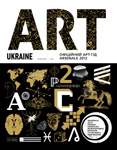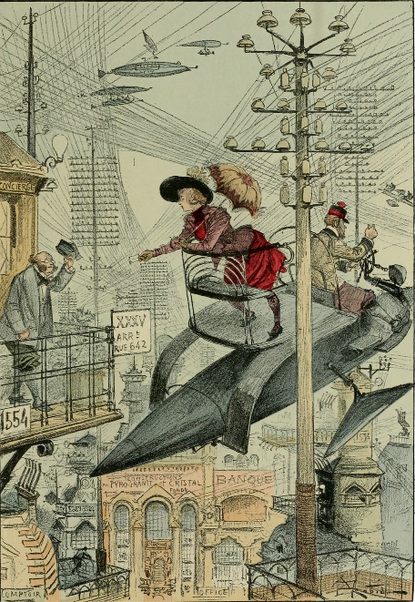The “Myth “Ukrainian Baroque”. National Art Museum Project
In April, a vast project the “Myth” Ukrainian Baroque” started in the Ukrainian National Art Museum. It investigates the history of Ukrainian art in a chimerical baroque perspective. Art Ukraine interviewed the project monitors Halyna Sklyarenko and Oksana Barshynova about the project’s idea, its purpose and perspectives.

The times of Christ's struggles. 18th centry. From Korsun city. The Ukrainian National Art Museum

ART UKRAINE № 3(28) May-June 2012. Heading PANJRAMA.UA
Catherina Stukalova Tell us a bit about the prehistory of the project, which is devoted to the “Baroque line” in Ukrainian art?
Halyna Sklyarenko, the idea of the project started long ago in the 1990’s together with interest for Ukrainian art of “new wave”, which drew attention to the peculiarities of national tradition. But, the opportunity to carry out the project came into sight only recently. However, in our opinion, its actuality is obvious. Because this pattern of culture, which formed in Ukraine in a very complicated historical period – XVII-XVIII centuries. It determined the features of national consciousness in many aspects, being reflected not only in art, but also in mentality, in public life peculiarities, in politics etc. The result of XX century history analysis is that it becomes evident that the very “baroqueness” is actualised at every turning point of our country life. It begins from the modernism and avant-garde of the early 20th century and continues into social realism, which while declaratively denying national peculiarities still widely used the baroque principles of consciousness manipulations and playing with imaginary and real. Today, when Ukraine faces the alternative between “West” and “East”, between “global” and “local”, tracking pain in the modern world, the “baroque” component of its culture manifests itself in all realms of our life.
S.D. Dumenko, A.A. Popov, V.V. Tokarev, V.A. Tokarev. The holiday of the Soviet sailors. Celeing painting of the Sailor's Palace in Odessa. 1952
- Is the art of “new wave” especially emphasised in the exposition or are all the epochs represented equally?
- We are interested, firstly, in all phenomenons of tradition, which is shown in different time epochs, it exists in different artistic languages. Though we do not separate the “new wave” topic, the exposition represents almost all of its participants. The artists were the first to approach baroque not apologetically but critically as one of the problems of our culture, where mighty cordiality, power of fantasy, bright decorative values very often substituted analyticity and reality. The project operates with a beautiful collection of “classical baroque” works of New Wave of Ukrainian Art which are displayed in the halls on the ground floor. To emphasise the magnification of Ukrainian baroque tradition we use multimedia presentations of architectural memorial, book graphics etc. But, the exhibition of works of the XX century and late decades are presented on the first floor and are particularly singled out.
The peculiarity of the project lies in the problems associated with the topic, “discussion upon baroque”. That is why the quotations of famous historians, culture experts, art critics, philosophers, which are sometimes contradicting and vague, are included in the exposition. Still, at the end of the day, the history of Ukrainian art is not realised yet, new emphases are not evident. It still exists, on the one hand, captured by soviet art criticism, and on the other hand it is considered to be the reflection of the artistic processes in Russia. Meanwhile, Ukrainian history and art possess their own significance, tension, conflicts; quite different outlook patterns and esthetic stereotypes, all of which are important for Ukrainians. Everything occurred in a quite different way in Ukraine. This project is aimed to draw attention to the very many Ukrainian problems.
S.D. Dumenko, A.A. Popov, V.V. Tokarev, V.A. Tokarev. The holiday of the Soviet sailors. Celeing painting of the Sailor's Palace in Odessa. 1952
- What other research and popular educational activity is planned for the scope of the project?
Oksana Barshynova, The project program includes the organisation of topical excursions according to the specially elaborated methodological recommendations. On May 20th, a round table, as far as theoretical aspects of baroque problems are concerned, will take place, in which art historians, art experts and critics will participate. It will include several artists’ actions, a screening of documentary films connected with the theme of the project, and a musical party dedicated to neobaroque.
It should be said, that this project turned out to be very important for the museum itself, most importantly for the new concept of XX century art exposure. During our work, we constantly face the problem of new approaches. They lack the vagueness of position that begs the question “what is the principle of Ukrainian art of the XX century?” it is so difficult to answer. Collaboration with theoreticians and art historians, in this situation, is very creative.
It was not quite easy for the museum to undertake to dedicate the whole first floor for the project, this was unique. We hope, for the sake of both of us, that the Ukrainian museum practical experience in general will become a well-publicised and efficient event. As it is, this is one of our first projects which operated with the experience and knowledge of the whole museum staff: keepers, restorers and the managers of all museum departments.

St. Barbara. 18th century.Central Ukraine The Ukrainian National Art Museum
- Is there a chance, that due to this exhibition, an exposition could be held regularly? Does the museum intend to develop co-operation between the theoreticians and the art historians in upcoming projects?
Oksana Barshynova There is no doubt about it. We are planning to make a presentation of the catalogue at the close of the project in September and arrange for further discussion of the project, that way it can influence the exposition of our museum and museum life in general.
Halyna Sklyarenko We see this project as a part of a great program which can comprise two more vast expositions that analyse other components of Ukrainian art tradition. Baroque is not the only topic. It is important to say that, recently, a very active team of professionals has been formed in the museum; they are very capable of realising such projects. A New Wave of Ukrainian Art can become the center which will raise the bar of research and expositional activity in our country.
Catherina Stukalova










